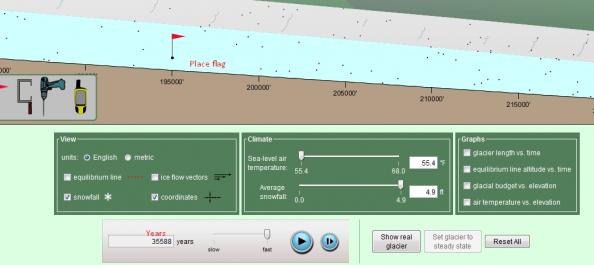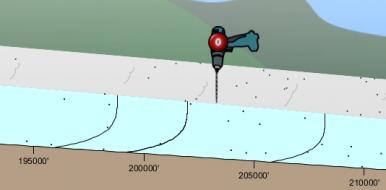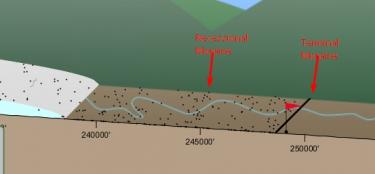Understanding Glaciers Lab
Understanding Glaciers Lab
In this digital Earth Science lab students will explore glaciers and run a digital simulation using Phet Simulations. In order to run this simulation with your students, you will need to have Java installed on the machines. This can be a fun lab and students will learn a bunch about glaciers, their landforms, and use some math to calculate a glacier's growth rate and rate of speed.
Some of the landforms students will research are: hanging valleys, u-shaped valleys, aretes, horns, cirques, till, terminal and lateral moraines, outwash plains, drumlins, and eskers.
Using the simulation students will use math to determine the rate of speed for a glacier that they built.

They can use the drill tool to drill holes in the glacier to demonstrate that the top of the glacier is moving faster than the bottom of it. This is because friction is causing a drag on the bottom of the glacier.

Students will use a glacier budget meter to calculate whether or not the glacier is retreating or advancing and by how many feet per year.

Students can see that the glacier deposits its sediment at the end of the glacier and that it is called the terminal moraines and that as a glacier retreats it deposits sediment along its path called recessional moraines.

There are other features of the online simulation that you can use with your students. The lab the way I have it takes about 2 days to complete. I also show a glacier slideshow and glacier images at EarthScience.xyz/Glaciers.
You can buy the Google Doc version of the Glacier Lab for $1.00 at Teachers pay Teachers. It includes the answer key and my reflections about this lab.









